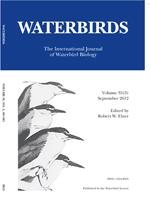A difficulty in the study of monomorphic species is the inability of observers to visually distinguish females from males. Based on a sample of 745 known-sex birds nesting at Bird Island, MA, USA, a discriminant function analysis (DFA) was used to sex Roseate Terns (Sterna dougallii) of the Northwest Atlantic population using morphological measurements. DFA using only the total length of the head (including the bill) correctly identified the sex of approximately 86% of the terns, which increased to 88% if both members of a pair were measured. Including additional measurements increased these percentages slightly, to 87% and 90%, respectively. These levels of accuracy are generally higher than those reported for other species of terns. Because female-female pairs are frequent in this population, one cannot assume that the member of a pair with the larger head is a male, and additional discriminant functions were developed to help separate female-female from male-female pairs.
How to translate text using browser tools
1 September 2012
Morphometric Sexing of Northwest Atlantic Roseate Terns
Brian G. Palestis,
Ian C. T. Nisbet,
Jeremy J. Hatch,
Patricia Szczys,
Jeffrey A. Spendelow

Waterbirds
Vol. 35 • No. 3
September 2012
Vol. 35 • No. 3
September 2012
—discriminant function
female-female pair
morphometric sexing
Roseate Tern
sexual dimorphism
Sterna dougallii.




